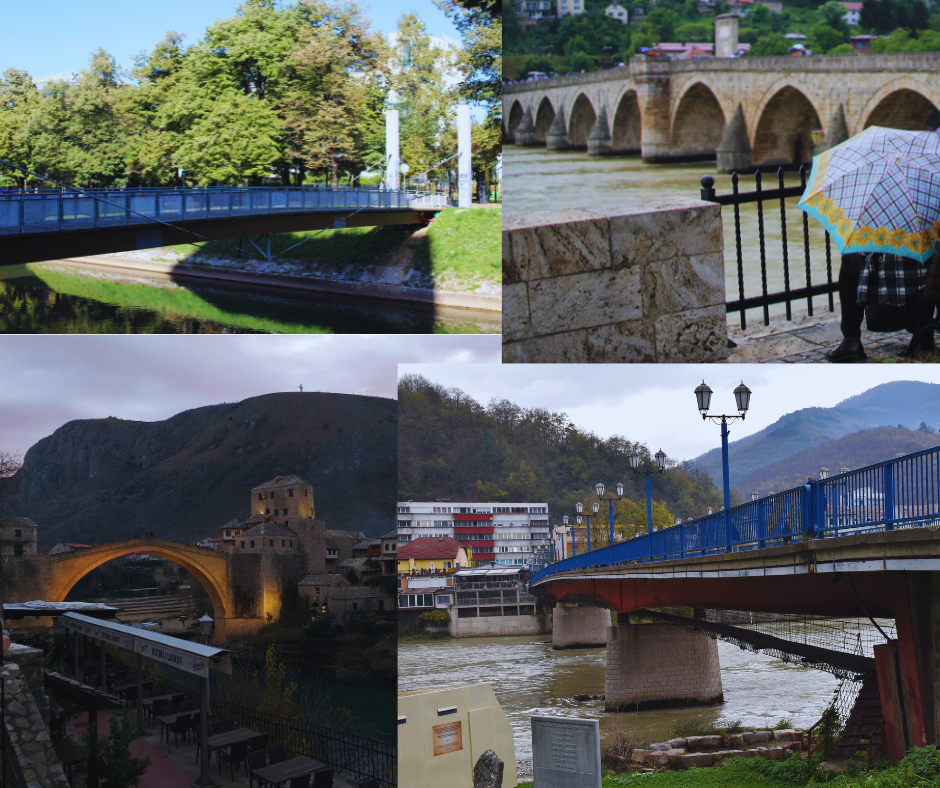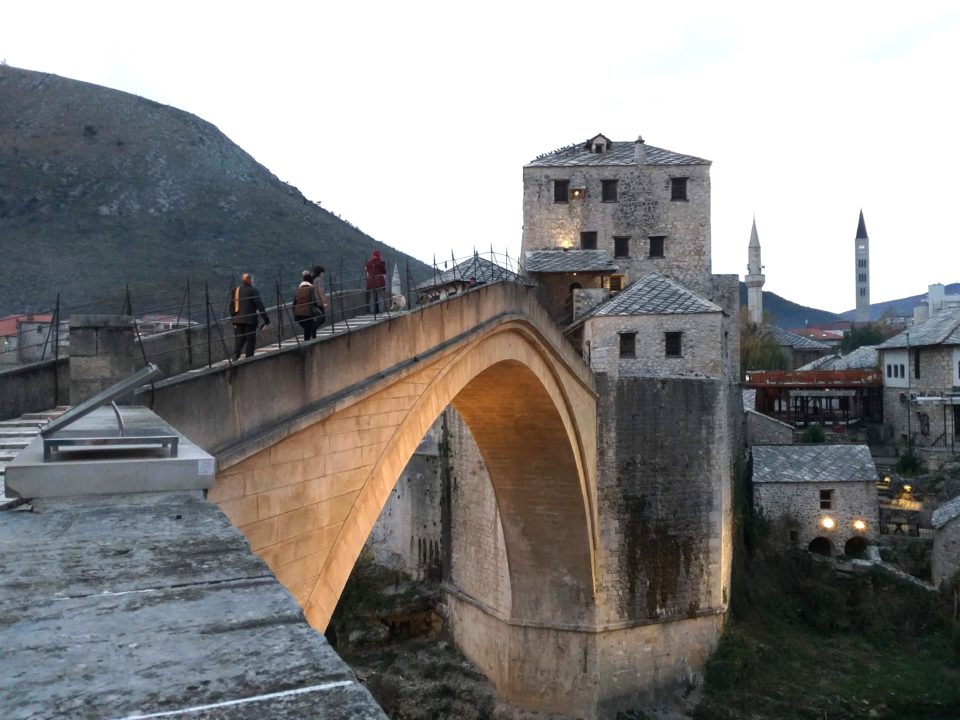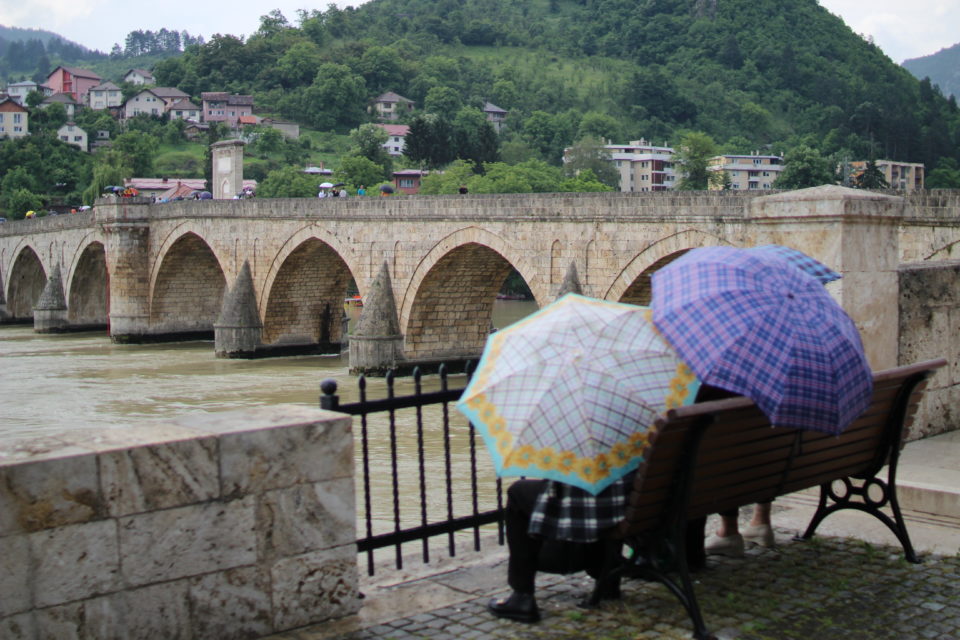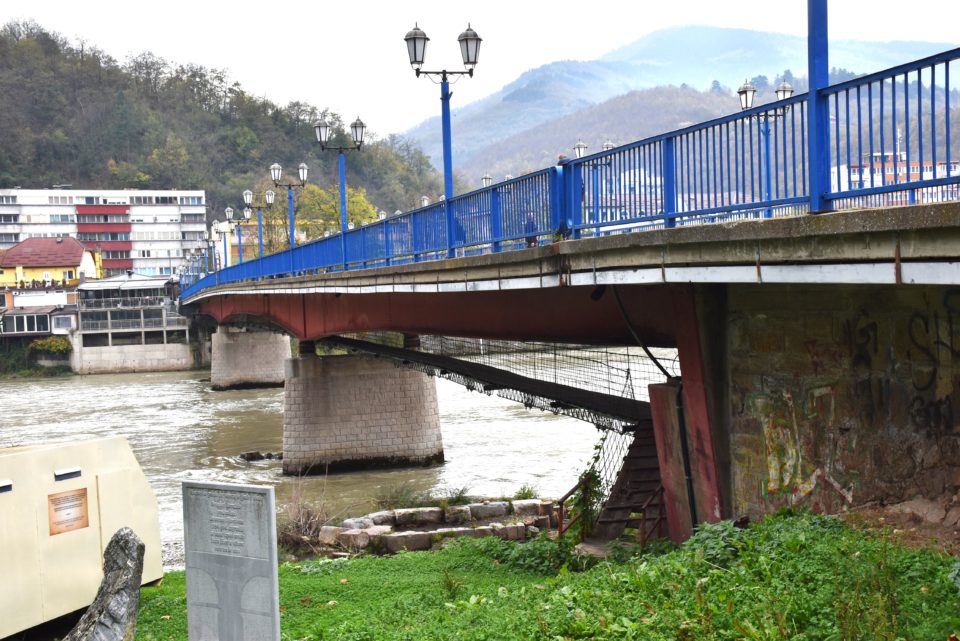
In Bosnia and Herzegovina, bridges represent an important part of cultural and historical heritage. Telling stories of bygone eras, they are often tourist attractions. The Old Bridge in Mostar, Ars Aevi in Sarajevo, Mehmed Pasha Sokolović Bridge in Višegrad, and the so-called ‘Bridge under the Bridge’ in Goražde are just some of the bridges that defy time and captivate with their endurance and unique character.
Among the most remarkable bridges in Bosnia and Herzegovina is the Old Bridge in Mostar, built in the 16th century during Ottoman rule. The bridge was restored after sustaining damage during the Bosnian War and is now a major tourist attraction as well as a designated UNESCO World Heritage Site since 2005.
“It’s recognized worldwide as a special tourist destination, and so it exudes a positive atmosphere of socializing and good times,” says Senad Suljić. He adds that the bridge’s charm attracts a great deal of positive energy, highlighting the Red Bull Cliff Diving event, various concerts, and the shores crowded with young people during the summer.
Suljić observes that Bosnia’s younger generations learn about the country’s recent tragedies from family members or in school, but not having gone through ‘the Golgotha’ themselves, they perceive the bridge as a place for socializing, romance, and pleasant memories.
Mostar’s Enduring Old Bridge
The Old Bridge was destroyed during the 1990s war in Bosnia and Herzegovina and was rebuilt in 2004.
“Those of us who are a little older often pause and remember everything, but, like everywhere, time moves on. There’s also a culture of war memorialization, and the Cultural Center is one of the important institutions engaged in commemorating both sad and happy dates in the city’s history, including [sic] the Old Bridge. That arch over the Neretva River emanates an interesting energy,” said Suljić, stressing that this energy is stronger than any hatred.

“There isn’t a country or a home without a picture of the Old Bridge on the wall. Of course, it should be a link with people worldwide, and the Old Bridge has been that for a long time. Like everything in life, feelings towards bridges vary, but I think that for the majority, every bridge is a symbol of connection, socializing, and positive anticipation of what will be found on the other side,” Suljić reflected, adding that he likes the verse “A bridge extends wherever I stand,” from Đorđe Balašević’s song “Sevdalinka.”
Višegrad’s world-class landmark
Just as in Mostar, Ottoman culture is discernible in Višegrad, where the Mehmed Pasha Sokolović Bridge, designated a UNESCO World Heritage Site in 2007, has stood for centuries. According to Marko Božić, the director of the Tourism Organization of Višegrad Municipality, the bridge is the most visited attraction in Višegrad, drawing an estimated 200,000 tourists to the city in 2022.
The Mehmed Paša Sokolović Bridge across the Drina River in the east of Bosnia and Herzegovina was built at the end of the 16th century by the court architect Mimar Koca Sinan on the orders of Grand Vizier Mehmed Paša Sokolović. Characteristic of the apogee of Ottoman monumental architecture and civil engineering, the bridge has 11 masonry arches with spans of 11 m to 15 m, and an access ramp at right angles with four arches on the left bank of the river.
The reconstruction of the bridge took place from 2013 to 2015. Its maintenance was overseen by Višegrad Municipality and the Republic Institute for the Protection of Cultural-Historical and Natural Heritage of the Republika Srpska.
Asked whether the bridge is a symbol of connection and if it carries such symbolism today, Božić quotes the writer and Nobel laureate, Ivo Andrić: “Of all that a man is impelled to build in this life, nothing is in my eyes finer and more precious than a bridge. Bridges are more important than houses, holier, because they are more all-embracing than places of worship. Belonging to everyone and the same for everyone, useful, built always rationally, in a place in which the greatest number of human needs coincide, they are more enduring than other buildings and serve nothing which is secret or evil.”

The Mehmed Pasha Sokolović Bridge is a national monument of Bosnia and Herzegovina, and Božić believes that young people should learn from, preserve, and cherish such monuments. “We sincerely want to see the Višegrad bridge as a place where people from all over the world come together, visiting Višegrad as tourists in increasing numbers to see this famous world-class landmark with their own eyes. It’s important for younger generations to understand the significance of national monuments and cherish them in their local communities, recognizing these monuments as part of our national identity and treasures to be preserved for future generations,” said Božić.
A Wonder of Wartime Architecture in Goražde
The unusual ‘Bridge under the Bridge’, located in Goražde, tells a story of human suffering and survival. Admir Džemidžić, a curator at the Goražde Local Museum, explained how the bridge was created during the war in Bosnia and Herzegovina when Goražde was under siege and its inhabitants needed an easier way of crossing from one side of the Drina River to the other.
“The war hospital was on one side and the command headquarters was on the other, and they needed to have some kind of communication. The wounded had to be transported to the hospital, as did the medicines. So, in 1994, the so-called ‘Bridge under the Bridge’ was built. The chief engineer was Selver Sijerčić, who died in the war. They say the bridge was built at night and was completed in a few days because all the necessary structures had been made earlier,” Džemidžić explained, noting that metal rods were inserted above the bridge where the structure was connected, and thus the bridge was made with wooden paneling.
Due to the small space between the two bridges, those crossing the ‘Bridge under the Bridge’ had to crouch down. As a result, some people injured themselves and bore the mark of crossing the ‘Bridge under the Bridge’ on their heads for some time.

“For a while, that bridge was a lifeline for our city and people. Our goal is to preserve it the best we can, to protect it and open it to the public in the future. We plan to install a new floor and secure the entire bridge so that we can get a permit to use it for touristic purposes. It would be a commodity that we could use here and offer to tourists and all history enthusiasts, and also a way to share with our children what our countrymen faced during the war,” Džemidžić stated.
As he pointed out, this rare type of bridge represents a “wonder of wartime architecture”.
He adds, “People on boats and above the bridge built this architectural marvel at night and during ceasefires, and it still stands today and can still be used for similar purposes. When we give tours, we take visitors to the start of the bridge and explain how and why it was created and its significance. When it’s restored, let it be a bridge of peace, not a bridge of war, a bridge under a bridge, or a wonder of wartime architecture. Let it be a bridge of peace and let everyone come to see it and realize what trouble and human folly actually led to its construction,” said Džemidžić.
Sarajevo’s Cultural Bridge
The Ars Aevi Bridge in Sarajevo is a bridge with a more peaceful story. This pedestrian bridge is clearly visible from the banks of the Miljacka River in the city center. As stated by the director of the Ars Aevi Museum of Contemporary Art, Senka Ibrišimbegović, this bridge represents one of “the city’s most important communication lines,” connecting the cultural and residential zones of Sarajevo. The bridge was built in 2002, thanks to the contributions of Favero & Milan, an engineering company from Venice, and other Italian and foreign companies.
The construction of the bridge was made possible through the support of Novo Sarajevo Municipality and various Sarajevo Canton institutions, including the City Institute for the Development of the Sarajevo Canton.

Bosnia and Herzegovina has many bridges, each with an untold story that intrigues visitors and keeps them coming back for years. Their charm and preservation remain a legacy for younger generations to spread the history and beauty of Bosnia and Herzegovina in their communities and far beyond.
____________________
This article was initially published within the second edition of MIR Magazine (May 2024). MIR, which means ‘peace’ in Bosnian is an annual publication and platform for young inventive people developed by the Post-Conflict Research Center and Balkan Diskurs.







